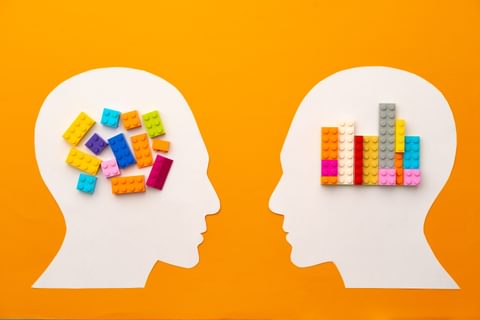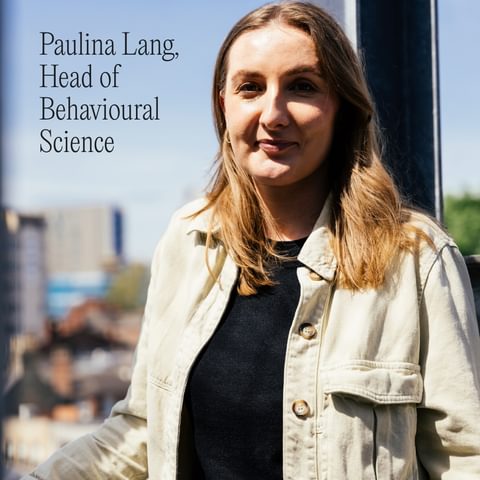NEWS ALERT - We won a SILVER IPM award for Best use of Social Media, 2025! Read more🏆

When it came to using sensory and behavioural science in this particular project, it really played a central role in how we approached the creative process. Our team utilised behavioural science to better understand how consumers think, feel and ultimately act, which gave us valuable insights into the key moments where we could influence consumer behaviour. This exercise assisted us in creating strategies that would connect on an emotional level, promoting more intense interaction with the brand.
On the sensory front, our sensory specialists conducted a thorough sensory decode, where they mapped out the sensory experience that the brand offers, be it the visual effect, the touch, sounds or even scents. By merging these two fields, we were able to develop an integrated, consumer-centric experience. What made our approach unique was the way we integrated these insights right from the start, ensuring that the creative direction was not just driven by intuition but grounded in data and evidence that we could confidently present to the client.
One of the key principles that guided us during the pitch was understanding the drivers and barriers to consumer behaviour. We began by establishing an understanding of our target group, determining what behaviours we wanted to stimulate: whether that was building brand loyalty, driving product trials or enabling consumers to build a closer relationship with the brand through rituals. Behavioural science assisted us in identifying the driving forces behind such behaviour, such as hedonic motivation, i.e., the seeking of pleasure or the escape from discomfort. These principles helped us target our efforts on what was most probable to connect with consumers emotionally.
In doing so, we developed a strong framework for making decisions, ensuring that our plans were not driven by assumptions, but by what we know influences consumer behaviour. Knowing the psychological forces at work, our team was then able to lead the creative direction in a manner that would really engage the target market.

The sensory decode is an interesting process in which our sensory experts fully immerse themselves in the product experience, really becoming consumers. Our group closely mapped the sensory experience that the product or service provides, making sure to capture each touch point that could generate a sensory response, whether of sight, sound, touch or smell. They search for those defining instances when the sensory experience can fundamentally alter how the consumer understands and interacts with the product.
By incorporating these sensory findings into the process, we were able to use specific, actionable information to inform our creative direction. For instance, if we were working with a food product, the sensory team would provide us with a description of the sound of unwrapping the package or the feel of the product and that would be used to direct our creative team. These sensory signifiers such as sounds, textures and visuals allow us to create an experience that is real and emotionally connected with the consumer.
Yes, there certainly were challenges, as merging various disciplines can sometimes be complicated, especially when attempting to make sure that they all work together smoothly. In our instance, we were combining the psychological understanding from behavioural science, which is centred around decision-making and emotional involvement, with the sensory experience, which is more about how consumers engage with a product through their senses. The task was to make sure that these two aspects did not feel disconnected, but instead complemented each other to help inform the creative strategy.
One key learning from this experience was the importance of early collaboration. It’s crucial that our teams, whether it's the behavioural scientists, sensory experts or creatives come together early in the process to align on objectives and share insights. This helps ensure that the final creative work is cohesive and aligned with both the behavioural and sensory insights. Another key takeaway was the importance of translating these insights in an actionable way for our creative team, so they have everything they need to bring the strategy to life.
Behavioural and sensory science can be applied to play a pivotal role along every point along the consumer journey, not simply during pitches. For companies, these disciplines can be used to maximise anything from online interactions to in-store experiences. With the use of behavioural science, companies can refine their messaging, enhance customer interactions on websites or social media and make overall consumer experiences more effective. Through understanding the psychological drivers of consumer behaviour, brands are able to develop strategies that influence behaviour, whether it's inducing repeat buys, building brand loyalty or increasing deeper engagement.
Sensory science, on the other hand, can be used to refine product experiences, whether it’s packaging design, retail experiences or online touchpoints. Sensory insights ensure consistency across all consumer interactions with the brand, which strengthens brand identity and builds long-term consumer loyalty.
Both behavioural and sensory science work together to create a more immersive, emotional and memorable brand experience that continues to resonate with consumers well beyond the pitch.